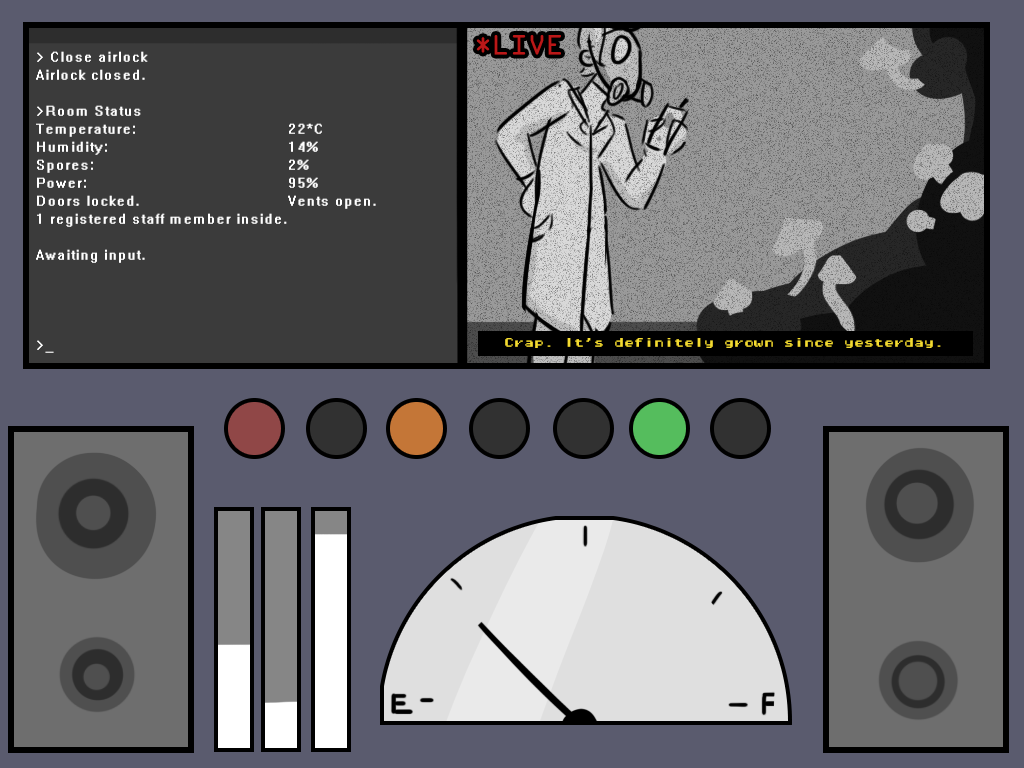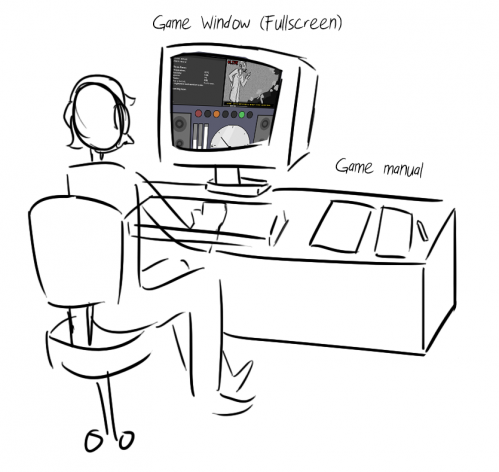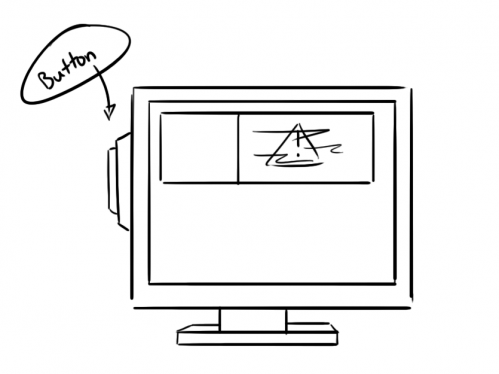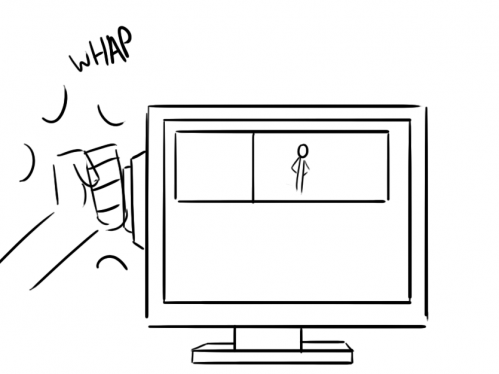
Theme: Play & Materiality
Method: Create a proposal for a video game that uses a physical object as a central part of its gameplay.
Context: Game design. Inspiration from titles such as Keep Talking and Nobody Explodes, Stories Untold, Myst, and Please, Don't Touch Anything.
Response:
In order to explore the idea of materiality, I had a shot at designing a short game that revolves around reading a manual, and taking notes in it.
Players take the role of a scientist who is observing one of their colleagues conducting experiments on a strange growth. It is the player's job to monitor the status of both their colleague and the conditions of the test, in order to ensure that no accidents occur.
The game is played on a computer stationed at a desk, and is ideally run in fullscreen. The game window represents the "face" of a large machine, with a number of diodes, gauges, and screens on it. The idea is that the machine looks overwhelmingly complicated, and is difficult to read by itself alone.
The player's keyboard represents the control panel of the machine. The mouse is not used, but players can use their keyboard to type commands into the machine, or simply press buttons to turn things on and off.
Finally, the player also has a printed manual sitting next to them. The manual contains a description of the basic functions of the machine, although some information has been left out.
The player's job is to monitor the experiment and keep things running smoothly for as long as possible. Unfortunately, the manual they were given only has enough instructions to cover the most basic of functions and does not list what every dial or light may represent. The player will need to experiment with commands and write down their findings within the handbook, for later use.
As the game goes on, more and more things start to go wrong with the experiment - meaning the player will either have to flip rapidly back and forth between pages to get all the answers they need, or tear the book apart. Either way, on-screen chaos forces the player to find more efficient ways of notetaking and problem-solving.
(Players who want to get really fancy can also attach a USB button to the side of their computer. Should the screen start glitching out, players can whack the button to "fix" the machine. Because as we all know, slapping an old machine is the best way of fixing it.)
About This Work
By Courtenay
Email Courtenay
Published On: 23/08/2018



